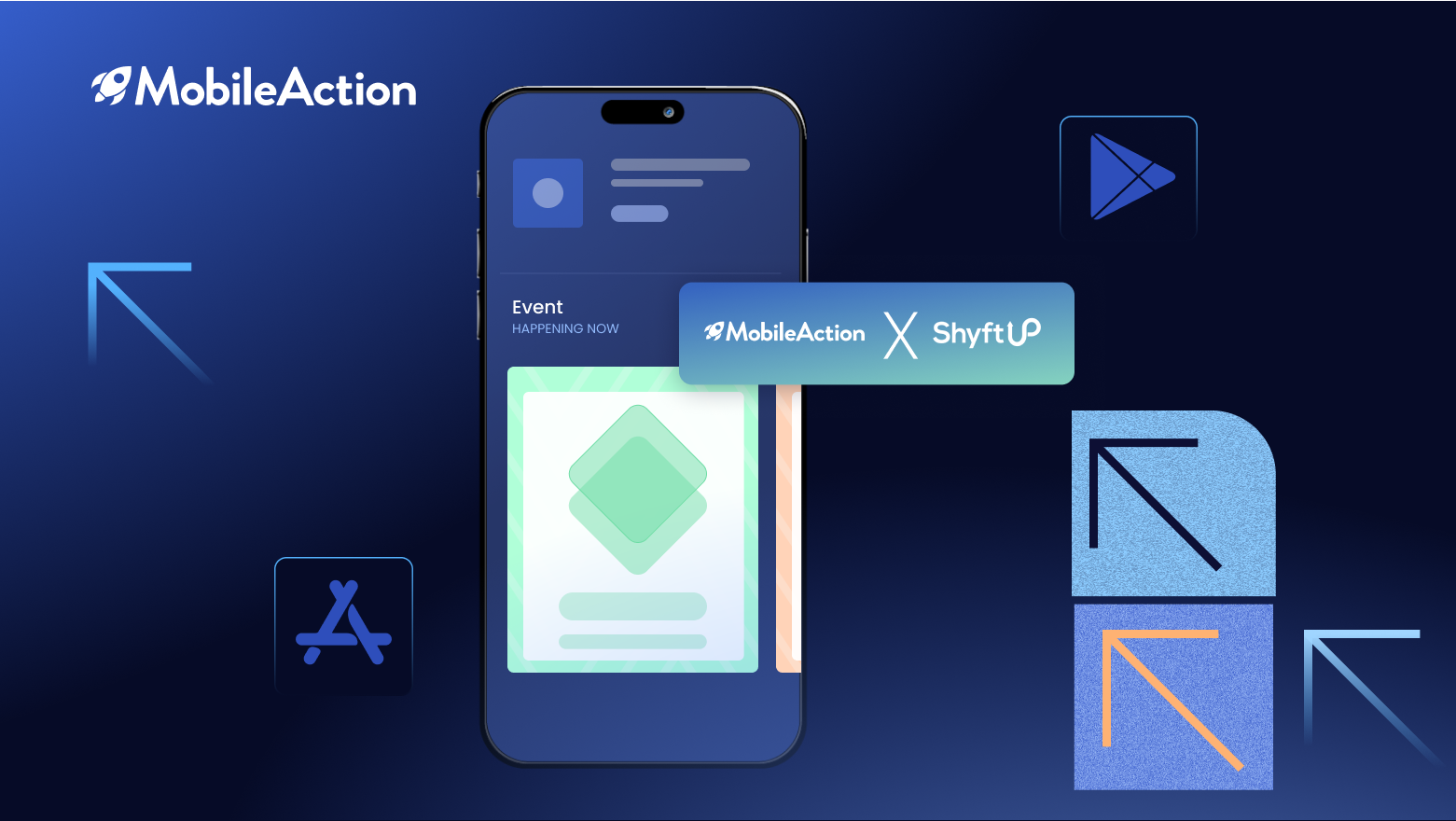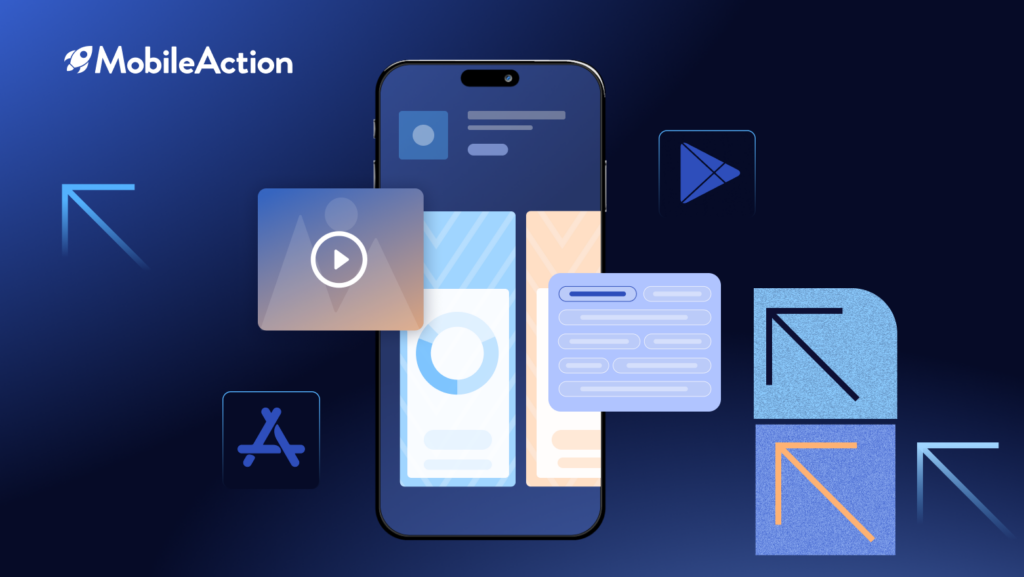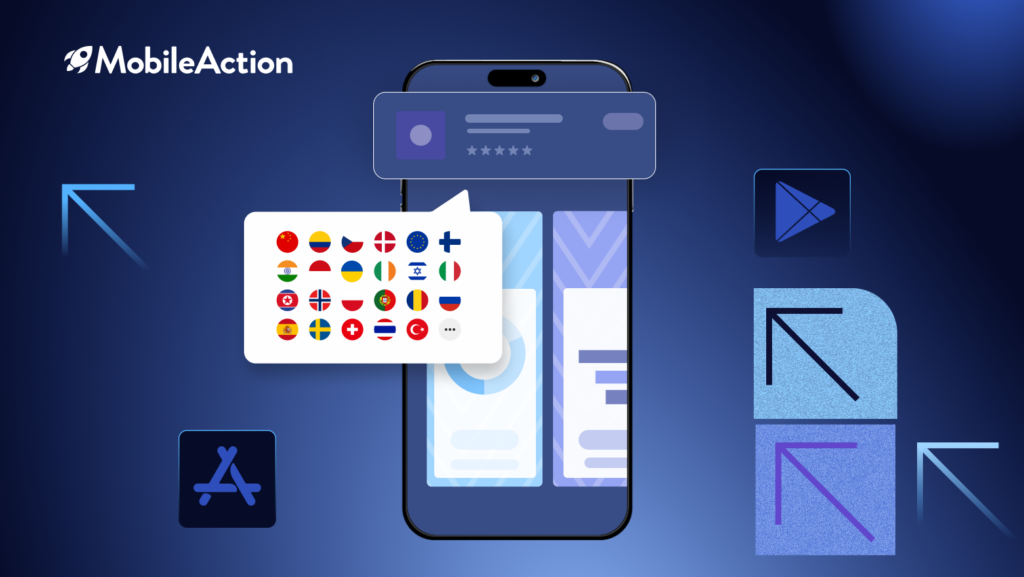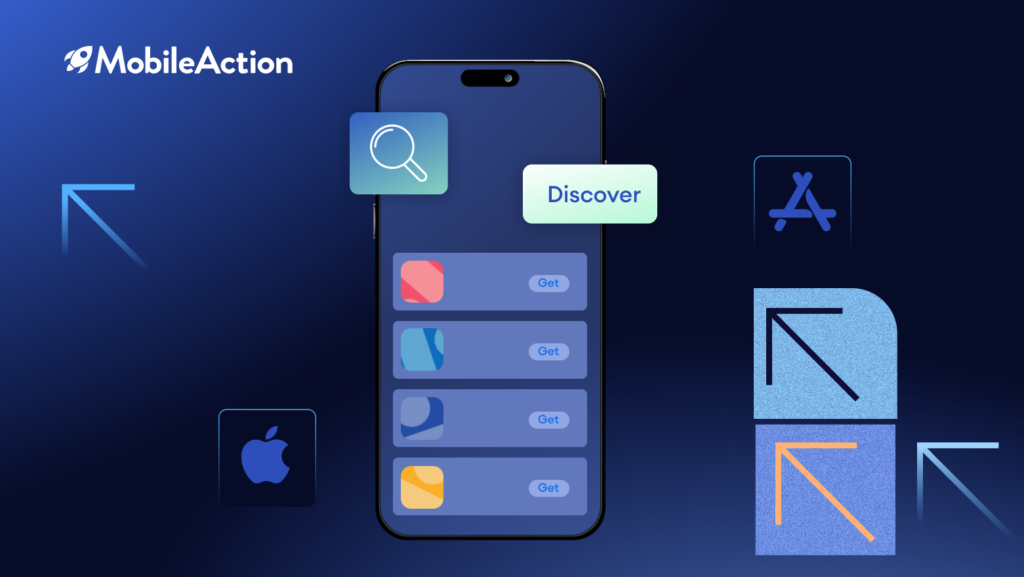Back in 2021, Apple introduced a powerful feature with iOS 15 called in-app events.
This gave developers the ability to promote time-based activities and unlockable content directly to users through system notifications. In May 2022, Google announced a series of major updates and new product features for Android developers and publishers.
Among these new features, they introduced promotional content (formerly LiveOps), a new functionality – very similar to in-app events – that allows developers to promote in-app activities and content directly on Google Play.
With both Apple and Google now providing first-party solutions to drive the discovery of in-app deals, activities, and unlockables, the landscape for mobile marketing and monetization is undergoing a significant change.
Savvy developers who understand how to properly leverage these new features will be able to cut through the noise, boost the engagement of loyal users, and attract new users to their apps and games.
In this comprehensive guide, we dive into everything you need to know about in-app events on iOS and promotional content on Android.
You will learn proven strategies, best practices, and practical examples to plan and execute successful in-app campaigns that drive value.
By the end, you will have a complete playbook to maximize the potential of these powerful new features.
What are in-app events and promotional content?
App Store in-app events
In-app events are timely events within apps and games — such as game competitions, movie premieres, live-streamed experiences, and more.
People can discover your in-app events on the App Store on iOS and iPadOS, giving you an entirely new way to showcase your events and expand their reach — whether you’d like to reach new users, keep your current users informed, or reconnect with previous users.
On iOS 15 and iPadOS 15 and later, in-app events appear across the App Store as event cards that include images or video, the event name, and a short description.
People can tap to open an event details page, which provides a more immersive experience with a longer event description and notes if an in-app purchase or subscription is required to participate.
From this page, they can share your event with others — for example, via Messages or social media. And they can opt-in on the event card and event details page to receive a notification from the App Store when your event starts.
If someone doesn’t have your app or game, they can download it directly from your in-app event card or event details page.
Once downloaded, they can tap Open to be seamlessly directed to the appropriate area within your app or game.
As you set up your in-app event, you also have to add event details.
- Event availability: Select your event start and end date. Your in-app event can last up to 31 days and be promoted up to 14 days before the start date. You can choose to have your event available only for specific regions for specific dates.
- Event deep link: This link takes your users who tap “Open” on the event card or details page to the event content within your app. It’s recommended to use a universal link or custom URL. Avoid using URL shorteners.
- Event purpose: Choose the option that best fits your event’s purpose: appropriate for all users; attract new users; keep active users informed or bring back lapsed users.
- Event priority: Events are listed chronologically based on the soonest start date displayed first. Marking an event as high priority will make it appear ahead of normal priority events.
At any one time, up to 5 events can be published per application and these can span over 31 days.
App events can be configured to have different start, end, and publish dates based on the country, and metadata (title, subtitle, description, etc.) in different languages.
As a result, you can define a clear strategy depending on the types of users you want to target!
Google Play Store promotional content
Promotional content is self-serve merchandising units on Google Play that feature fresh and timely content such as special offers, limited-time events, new content, and major updates.
These events help you to engage with users outside of your app and drive them to open or reinstall your app or take advantage of offers such as discounts or special deals for new buyers.
Our internal analysis shows that promotional content drives 2% more 28-day active users and 4% higher revenue for developers using the feature than those that do not.
Running high-quality and frequent promotional content is an important signal to Google Play that you invest in your app and may make you eligible for further featuring across Google Play.
“For the limited-time events, Google Play Store provides the Events tab, but it is only available for games in Australia, Brazil, Canada, France, Germany, Hong Kong, India, Indonesia, Italy, Japan, Korea, Mexico, Russia, Taiwan, Türkiye, UK, and the US.”
Where do in-app events and promotional content appear?
App Store
In-app events appear:
- On your product page, which displays all of your currently published events.
- In search results. When users search for an app, the event card appears along with your app for users who have downloaded your app, while screenshots show for those who haven’t downloaded your app. Users can also search for in-app events directly. When users search for an event, the event card appears along with your app.
- In editorially curated selections and personalized recommendations on the Today, Games, and Apps tabs.
- In the suggested events.
Google Play Store
Google allows you to pick among 5 different types of promotional content (events, major updates, offers, crossovers, or pre-registration announcements) to increase engagement with your users.
However, you have to know your target market well enough to strategically decide which type of event you’ll launch and the frequency of these launches.
Unlike in-app events, there is no maximum limit to the number of promotional content an app can run at once on Google Play.
Each of these placements warrants consideration for how you structure your metadata and creatives since user intentions will vary across them. A user browsing the search results of a specific query already has an idea of the type of app they are looking for, while one navigating the Today Tab may simply be exploring different apps and offers more casually.
What type of content can be featured in in-app events and promotional content
Each in-app event can be created for a specific purpose. Here is a list of all the badges you can pick, along with their definitions:
App Store
Challenge: Encouraging users to work towards completing a specific goal within a time limit. For example, activities like fitness challenges or level-completion goals in games.
Competition: Positioning users against each other to earn the highest rank or rewards. Events could include leaderboard-based tournaments or contests.
Live Events: Coordinating real-time shared activities for all users simultaneously, such as live-streamed sports matches or concerts with interactive elements.
Major Update: Introducing significantly expanded features, levels, modes, or other substantial new experiences beyond basic fixes or visual tweaks.
New Season: Launching refreshed storylines, media, or themed content building on an established universe. Could represent sporting or gaming seasons, or television show runs.
Premiere: First-time introduction of unique new content types like movies, audio, or other debut materials.
Special Event: Custom limited-time crossover or collaborative activations not covered by standard categories. These provide exclusively new dimensions.
Google Play Store
Offers: Promotions that provide in-app discounts, bonuses, or rewards on select items or purchases.
Time-Limited Events: Competitions, challenges, or activations with a set start and end date/time where users can participate for rankings, prizes, or goal achievements.
Major Updates: Significant upgrades featuring features and announcements, content, and pre-registration updates.
Similarities and differences between in-app events & promotional content
iOS in-app events and Google Play promotional content share a lot of similarities in terms of the ability to reach new users, re-engage current users, and promote new app content across both stores without an app update.
Both promotional content and in-app events help developers:
- Increase your app visibility and download numbers across the stores
- Boost conversion rates
- Improve user retention & engagement
- Target the right audience (based on country/region or user eligibility)
- Get a boost in terms of app monetization
With these similarities, there are still some key technical differences between promotional content and in-app events when it comes to metadata, creatives, and event details:
| Event Detail | Google Play Promotional Content | iOS In-App Events |
| Event name | N/A | 30-character limit (indexed) |
| Tagline / short description | 80-character limit | 50-character limit (indexed) |
| Long description | 500-character limit | 120-character limit (not indexed) |
| Images | Primary: 1920×1080 px, 16:9 aspect ratio; Square: 1080×1080 px, 1:1 aspect ratio | Event card: 1920×1080 px, 16:9 aspect ratio; Event detail page: 1080×1920 px, 9:16 aspect ratio |
| Videos | YouTube URL with video monetization turned off | Supported extensions: .mov, .m4v, .mp4, no longer than 30 seconds |
| Badges/event types | Offer, time-limited event, major update | Challenge, competition, live event, major update, new season, premier, special event |
| Number of events | No maximum limit | Maximum of 5 live events at one time |
| Maximum duration | 4 weeks | 31 days |
One other key difference is that promotional content includes the “Offer” event type, which allows developers to grant discounts, deals, or free rewards as part of promotional content.
These offers can appear under their own separate “Offers” tab on Google Play, a feature that is currently lacking in Apple’s in-app events.
Benefits of leveraging in-app events & promotional content
App visibility
In-app events provide a strategic way to increase app visibility above standard discoverability methods.
Timely alerts for limited-time offers generate urgency rather than passive promotions.
Notifications reach directly through each platform’s insightful user targeting.
With users accustomed to acting on such prompts, events surface unfiltered to engage audiences based on past behaviors.
Every instance spins up word of mouth too, as users discuss what engaged them to spread awareness further.
Even data shows search volume spikes as curious observers inspect what captivated their community.
Moreover, loyal users unwittingly promote the app’s value through earned social mentions of standout moments.
When spread judiciously, events punctuate the app’s purpose pleasantly between sessions to cultivate top-of-mind credibility.
Far more than intermittent ads, well-designed events elevate recognition levels through this organic Discovery, word-of-mouth amplification, and strengthened top-of-mind status over time.
Downloads
Strategically promoted limited-time offers and activities catch the eye of potential on app listings.
Optimized event pages then showcase exclusive rewards available inside and can incentivize installs from browsers.
New users immediately enter a compelling event experience highlighting core value, with onboarding maximizing participation and retention. Existing customers also spread word-of-mouth from noteworthy promotions through social proof.
Those viewing promotion externally feel confident in the experience due to validated reviews.
Data shows events upranking apps as more participate, directly boosting visibility.
They then serve as a foundational north star for all growth work. When testing refines promotions, events dominate as drivers of high-quality eager installs.
A virtuous cycle emerges where demand and discovery reinforce each other.
Done systematically, event marketing works to catch eyes, validate the experience internally and externally, and increase ranks – all contributing to download successes.
It’s a strategic full-funnel approach leveraging the platform and social ecosystems for sustained growth.
User retention & engagement
Strategic events give users anticipated moments to drive repeated engagement over the long term.
Whether through limited rewards, seasonal themes, or collaborative Missions, events light competitive fires and foster community.
Time-boxed goals paired with variable schedules prevent boredom while reinforcing positive habitual check-ins.
Users gain emotionally invested incentives to defend rankings, boast achievements, and support peers through bragging rights on leaderboards.
Surprise perks for attendance further transform repetitive actions into rewards loyalists will rigorously safeguard. If spaced judiciously, these voluntary but curiously incidental interactions strengthen relationships most authentically.
Event features harness human motivation in a way that makes revisiting feel interconnected rather than obligated. This cultivates the most profound retention when curiosity evolves seamlessly into committed user advocacy.
Monetization
Events expertly use human nature to drive in-app purchases and maximize monetization.
Timed offers create exclusive scarcity appealing to impulse shoppers seeking perceived “deals of a lifetime.”
Meanwhile, limited periods spark bundle spending as users consolidate needs.
Competitive urges also activate spending habits to boost power or maintain coveted leaderboard visibility.
Attainable but just-out-of-reach goals trigger rational thoughts of “one last purchase” to complete tiers.
Peer-showing-off further fuels microtransactions for social status flexing between friends.
As trust builds from judiciously spaced value drops, loyal returners comprise the premium customer base.
Their highest lifetime worth results from cultivated pleasure in fueled developments.
Where early spenders found occasional deals tempting, dedicated supporters evolve through recurring quality engagements in a universe they feel part of. Events expertly monetize human psychology across the funnel to increase LTV through each strategic touchpoint.
Brand Loyalty
Improving the quality of the user experience engenders brand loyalty.
Having had a good experience with your products, a user is more likely to check out what else you are offering and share positive experiences on their networks.
That is why moviegoers flock to watch anything starring their favorite actor/actress even when the movie gets bad reviews.
In-app events are essential for boosting user loyalty because they provide insight into user behavior, allowing developers and marketers to optimize their apps for better engagement and retention.
This information is invaluable when it comes to improving the user experience and, ultimately, the success of the app.
Measuring the success of in-app events and promotional content
To measure in-app events and Promotional Content performance, understand user engagement, and make data-driven decisions for the events’ optimization, app marketers have a choice of the following tools (to name the best ones) – Google Analytics, Firebase Analytics, Mixpanel, Amplitude, and AppsFlyer.
To measure event performance Google Analytics provides app marketers with detailed insights into event impressions, conversions, and user feedback.
Using this analytical platform, app marketers and brands can assess the efficiency of the metadata used to design a specific in-app event or Promotional Content card.
All the above-mentioned analytical tools allow app marketers to measure these key metrics – event impressions, conversions, and user feedback.
The purpose of events on the App Store or Google Play is to draw app users’ attention to upcoming events and therefore the number of impressions each event card is getting is essential.
The way app marketers can impact how the app events will be represented in custom recommendations on the App Store or Google Play and hence increase the number of impressions they’re getting is to come with an eye-candy combination of a static image or video and text.
Just like with mobile app product page views, having lots of impressions for in-app events or Promotional Content is mandatory but not enough to have impactful event cards.
It’s about the conversion rate and ultimately user feedback.
The best way to optimize the conversion rate of your events is to apply A/B testing to the metadata you use for each in-app event or promotional content card.
Measuring in-app events performance
You can check the performance of your published in-app events in App Analytics in App Store Connect. This helps you to understand:
- Which events attract the most users by looking at downloads per event
- Where do users find your events by viewing acquisition sources
- How attractive your event marketing is by viewing event impressions, details page views, app opens, and notifications that have been set
When measuring your app performance, it is important to first identify your event purpose.
The event purpose field within the Event Details page in App Store Connect is where you can indicate whether your in-app event is meant to attract new users, keep your active users informed, or bring lapsed users back to your app.
Your event purpose will also help you determine the most important KPIs to monitor for each event.
For example, if your selected event purpose is to attract new users, the KPIs you may be most interested in include:
- Impressions
- New downloads
- Day 1 retention
Meanwhile, if the event’s purpose is to keep active users informed, you may want to look at:
- Daily active devices
- Longer-term retention
Finally, if your intended purpose is to bring lapsed users back to your app, the most important metrics may be:
- Total re-downloads
- Re-engagement
Apple has also added a new dashboard in App Analytics to help developers monitor their in-app events.
There, you will be able to see a list of your events and key metrics for each, such as impressions, downloads, number of users who opted in for notifications, event opens, source type, and more to help you measure performance and plan for future events.
Measuring promotional content performance
Once your events are submitted, their status and insights will be available in the promotional content tab.
For more granular analysis, Go to the Promotional content reports tab on the left–hand side under the Store performance tab and select the event that you want to analyze as shown below.
Here are some of the metrics you can measure:
Google Play Console
- Unique viewers
- Unique converters (acquisitions, opens, updates)
- Conversion rate
- Broken down by country
Keyword rankings (MobileAction)
MMP or other analytics tool that can track deep links
- Retention rate / re-engagement rate
- All post-install metrics
In-app events and promotional content best practices
Leveraging in-app events and promotional content requires careful planning to maximize user engagement and desired outcomes.
When implemented strategically following tried-and-true best practices, developers can enhance various key metrics from user retention to monetization. Some of the fundamental guidelines that top brands have adopted include:
- Always distinguish between new users, active users, and lapsed users (App Store only)
- Always use a trackable deep link
- Always use a deep link that takes users to the relevant part of the app
- Take advantage of promoting them on other sources (i.e. email, social media, web traffic, etc.)
- Do not forget that in-app events will replace your screenshots in search results
- Create time-relevant events (i.e. holidays, new content, etc.)
- Always take advantage of the fact that metadata gets indexed for keyword rankings (App Store only)
- Pay attention to start and end dates. Do not promote something that is no longer relevant or not live yet
- Create geo-targeted and localized in-app events. Do not promote something globally if it’s not available everywhere
EPIK Case
In one of our blogs named EPIK App’s Epic Win: Breaking the Social Media with AI Yearbook we explored the analytics behind EPIK’s success, the why and how of it, and the importance of leveraging in-app events.
Especially Instagram was instrumental in EPIK’s radically increasing popularity, as celebrities and influencers from diverse domains have actively shared and commented on their AI-generated yearbook pictures.
The real lesson here is that they have successfully announced their new “AI Yearbook” feature in their App Store listing. They did it by leveraging in-app events.
On October 2nd, 2023, EPIK made an impressive leap of 47 places, securing the third position among free apps.
Just three days later, on October 5th, it achieved a remarkable milestone by claiming the top spot in the Photo & Video category, dethroning the reigning champion, the Lapse application, another successful player in the same domain.
Interestingly, before they released the AI Yearbook feature, downloads were actually on a decline.
Still, EPIK has succeeded in making a sharp U-turn and changed the dynamics of the Photo & Video app category.
In-app events and promotional content guidelines
Both the App Store and Google Play Store provide specific guidelines for in-app events and promotional content. The specific guide for each element is as follows:
App Store in-app events Image and video specifications
| Media type | Supported extensions | Aspect ratio | Min size/resolution | Max size/resolution |
| Event card image | .jpg, .jpeg, .png | 16:9 | 1920×1080 px | 3840×2160 px |
| Event card video | .mov, m4v, .mp4 | 16:9 | 1920×1080 px 30 fps or 60 fps | 3840×2160 px 30 fps or 60 fps |
| Event detail page image | .jpg, .jpeg, .png | 9:16 | 1080×1920 px | 2160×3840 px |
| Event detail page video | 9:16 | .mov, .m4v, .mp4 | 1080×1920 px 30 fps or 60 fps | 2160×3840 px 30 fps or 60 fps |
Google Play Store promotional content assets requirements
| Promotional content information type | Requirement and guidelines | Promotional content text or image type |
| Event name | Name of the event | No restrictions |
| Tagline | Descriptive and specific to your event | Max. 80 characters |
| Description | Should be as relevant and expressive as possible | Max. 500 characters |
| Images | Relevant to the event and help users visualize the event | Primary: 1920×1080 px, 16:9 aspect ratio; Square: 1080×1080 px, 1:1 aspect ratio |
| Video | Not required, but highly recommended | YouTube video, but without monetization and ads |
This guide is created in collaboration with ShyftUp, a top-tier ASO Agency. ShyftUp, offering full-service ASO service, specializes in creating in-app events and promotional content tailored for you.
To stay ahead and fully leverage evolving features, consider connecting with ShyftUp.
Their commitment goes beyond simple service provision; they aim to ensure you effectively utilize in-app events, promotional content, and the latest app stores capabilities to your advantage.























